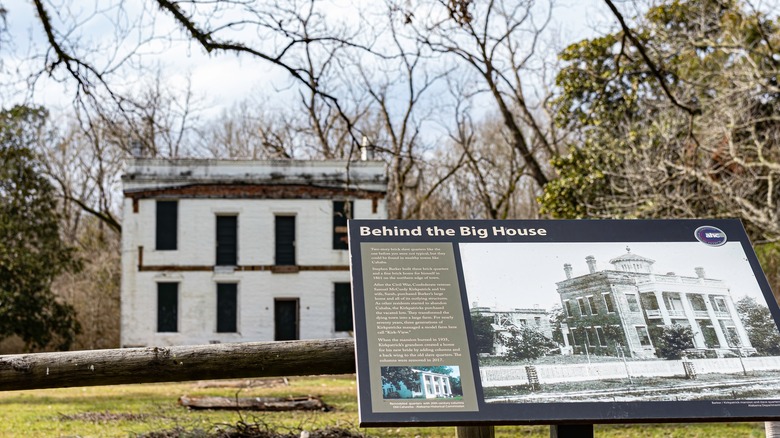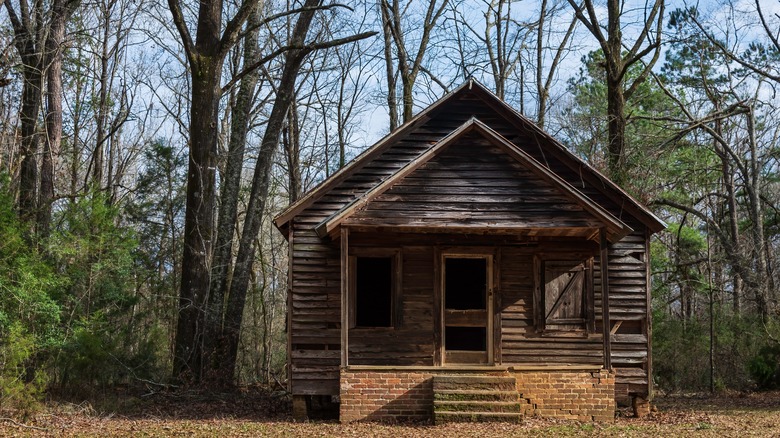The Reason This Town Is Called Alabama's Ghost Capital
It's not often that a state's capital city ends up a ghost town, but that's the case with Alabama's Old Cahawba. Old Cahawba (sometimes referred to as "Cahaba") isn't merely "Alabama's most famous Ghost Town," as the official Old Cahawba website says; it's a full-on "archaeological park" and "place of picturesque ruins." Via Advance Local, it's got free-standing brick columns left over from a burned-down manor house and slave quarters. During post-Civil War Reconstruction, freed slaves (including Black congressman Jeremiah Haralson) were chased away from the courthouse by white folks with guns. It was the site of a brutally overcrowded prison camp for Union soldiers and there are stories of a murderous familial shootout in the streets. A burial ground for slaves has been found.
Old Cahawba was Alabama's first permanent capital, from 1819-1826. (Huntsville was a temporary capital before this. In 1826 the capital moved to Tuscaloosa, and to Montgomery in 1846, per Encyclopedia of Alabama.) Following the Civil War, Cahawba was more or less abandoned by wealthy white residents, and came into use by freed slaves seeking refuge and a place to congregate.
Hotbed of slavery turned symbol of freedom
There aren't many specific ghost stories associated with the ghost town that is Old Cahawba, besides the general unease a visitor might feel at the site's connection to the depravities of slavery. But perhaps this is a better definition of "haunted" than anything else.
The Old Cahawba website does mention one urban legend-type tale, the "Pegues' Ghost" story. As the story goes, a will-o-the-wisp appeared to a young couple walking alone outside in 1862. It wobbled a bit, shimmered, moved close, then zoomed away into the forest. Others went on to recount similar encounters.
Looking to actual history, Country Roads describes how Old Cahawba was once called "The Mecca of the Radical Republican Party." Freed Black people used the town's abandoned churches and schools to register to vote, hold political rallies, and even rewrite Alabama's constitution. A former slave, Jordan Hatcher, took part in the latter. Around this time the county seat was moved to Selma, which folks will recognize from 1965's Martin Luther King-led non-violent Civil Rights march. In the 1980s the Alabama Historic Commission recognized the importance of Old Cahawba, and began working to have it preserved.
In case Old Cahawba's human rights record wasn't enough to merit a sense of hauntedness, you should note that Alabama's antebellum governor, William Wyatt Bibb, deliberately intended to build the town's original statehouse directly on top of — wait for it — a 300-year-old Native American burial mound. He died before he could begin construction.

